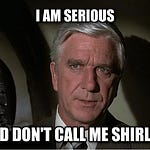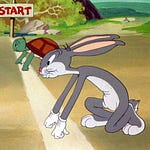If you look up the definition of the word “threshold,” you get two very different meanings. The first is that little strip of metal that goes across the bottom of your doorway. The second has to do with any stimulus reaching a high enough magnitude or intensity to cause a reaction to occur. Lately I’ve been thinking about both.
open the floodgates
Here in Alexandria, we have a quaint old downtown area that we call, originally enough, “Old Town.” Founded in 1749, it features a number of historic and historic-ish brick buildings that sit along the shore of the Potomac River.
The coffee shop that my buddies and I frequent is located in one such building. Walk inside, and you’re transported back in time by brick walls, exposed wooden rafters, a small stone fireplace.
There’s a price to pay for all this waterfront charm, though: flooding. The Potomac is tidal here, and when high tide combines with a nice heavy rain, the river has a habit of creeping right up the main street.
For this reason, sandbags are never far away — when a storm is in the forecast, shop owners can be seen stuffing their doorsills with them. In effect, the sandbag raises the threshold of the door, keeping the funky water from rolling in through the front door, ordering itself a latte and settling in for a while.
thresholds in medicine
In the world of medicine, “threshold” has another meaning. Let’s say you find yourself suffering from a splitting headache. You look in the medicine cabinet, only to find that all you have is baby aspirin. Well, your head is killing you, so you figure, let’s give it a try. But how many to take?
You try one and go lie down, but there’s no effect. You take another… Nuthin’. You try a third. Ah, there it is. The knot in your head loosens, the headache lifts. What do you do next? Do you continue taking more? That would be silly. You’ve reached the threshold amount of aspirin that you need to breach the doorway and extinguish the headache.
keto mice and seizure thresholds
I thought of this recently when I was watching Elaine Hsiao’s excellent presentation at the Metabolic Health Summit. Through a series of mouse experiments, she showed that the gut microbiome may be the missing link between the ketogenic diet and brain health.
It’s mind-blowing stuff, and a possible game-changer for this field of medicine. But something in her methodology has stuck with me.
In order to induce seizures in the lab rats, the researchers stuck some wires onto their heads and pumped them full of electricity (think Jack Nicholson in One Flew Over the Cuckoo’s Nest). This is not just for jollies, mind you - the idea is to measure just how strong a current is required to get each mouse to seize.
Mice on the ketogenic diet required a lot more voltage than did mice on a conventional diet. But they did still seize. The ketogenic diet didn’t make the mice invincible, it just made them more resistant to seizures.
The reason this has stuck with me is that it’s given me a new way to think about epilepsy. It’s easy to think of people with epilepsy as “those people who have seizures.” But in fact, anyone can have a seizure. Around 10% of us will have at least one seizure in our lifetime. So people with epilepsy are just folks who require somewhat less “voltage” than others.
The talk gave me a better understanding of what neurologists mean when they discuss a “seizure threshold.” As I mentioned recently, one theory of epilepsy is that seizures occur when excitatory neurons are not balanced by corresponding inhibitory neurons.
So you might say that zapping the mice with electricity pushed their brains off-balance and sent the excitatory signals way up, past the capacity of the inhibitory neurons to keep them in check. In other words, they had a certain seizure threshold, but the electricity overwhelmed this threshold.
But other things, too, can push the brain off-balance. We sometimes talk about seizure “triggers.” Strobe lights are the most well-known, and the reason why every other Netflix show has a warning at the top (although in reality only about 5% of people with epilepsy are photosensitive). But there are tons of others stimuli — from particular sounds, to chemicals, to foods — that may affect a person with epilepsy. In fact, author Judi Bruns has written an entire book called Seizure Triggers, which gives an encyclopedic overview of things that have been known to set off a seizure.
But maybe there’s a danger of thinking only in terms of triggers. It encourages us to see epilepsy like an allergy. If you come into contact with X stimulus, you end up with Y response. The threshold model is a little more nuanced. In it, the seizure is like a tide that’s approaching the front door of the brain. There are things that you can do raise the bottom of that door — exercising regularly, taking medication, using a ketogenic diet — and things that will lower the door frame — missing out on sleep, getting over-stressed, and so on. This is why I’ve moved away from thinking only about the ketogenic diet and toward a larger focus on a ketogenic lifestyle. As one of my interviewees said, “It all counts.”
dr. ben and the exercise threshold
Another person who talks in terms of thresholds is Ben Bocchicchio, PhD, who I’ve interviewed several times. He brings this idea into the world of health and exercise in a way that’s really fascinating.
According to Dr. Ben, the key to effectively working out is to push your muscle system to the point at which you initiate hormonal changes in the body. Once you reach this point — cross this threshold, if you will — you’ve accomplished all you’ll accomplish, and you can move on from working out to enjoying the rest of your day. (Or as Dr. Ben likes to say, “Do your fifteen minutes and get outta Dodge!”)
Click on the podcast episode above to hear more. It’s a brief but fascinating discussion, the next of my “Big Dave’s Small Bites” series of mini-interviews. And to get really deep, check out my long-form interview with Dr. Ben on YouTube, one of the most popular of my “Healthy Happy Hour” series.









